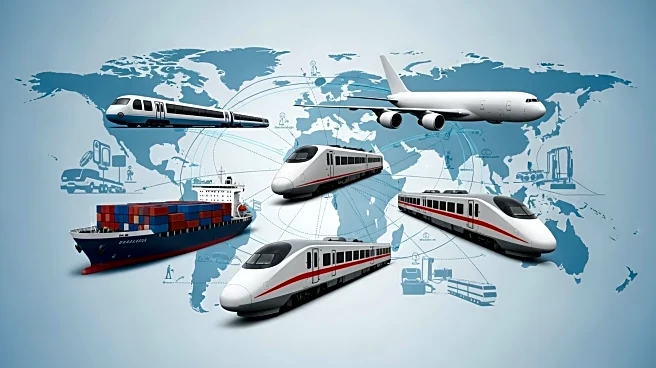What's Happening?
The logistics industry in the United States is increasingly adopting a multimodal transportation model to address the challenges posed by global trade volatility. This approach allows companies to use different modes of transport for various stages of a shipment's
journey, enhancing flexibility and resilience. As international trade policies fluctuate, the need for a robust domestic logistics strategy has become more pronounced. Companies are now focusing on domestic sourcing to gain better control over supply chains and reduce transit times. Multimodal freight offers the ability to match the right mode of transport to each leg of a journey, ensuring that shipments remain on schedule and within budget. This strategy is particularly beneficial when dealing with varying lead times and equipment availability, which are common challenges in logistics operations.
Why It's Important?
The shift towards multimodal freight is significant for U.S. industries as it provides a strategic advantage in managing supply chain disruptions. By offering more transportation options, companies can maintain operational efficiency and meet customer expectations despite external pressures. This approach also allows businesses to control costs by selecting the most cost-effective transportation methods without compromising service quality. As companies reconsider their sourcing strategies, transportation becomes a critical factor in decision-making, influencing whether to source from regional or international suppliers. The ability to adapt quickly to market changes or policy shifts is crucial for maintaining competitiveness in a volatile global trade environment.
What's Next?
As the adoption of multimodal freight continues to grow, logistics providers and brokers will play a crucial role in managing the complexities of coordinating different carriers and transportation types. Real-time visibility and end-to-end tracking will become essential components of a successful multimodal strategy, ensuring that shipments are secure and efficiently managed throughout their journey. Companies will likely invest in technology and partnerships that enhance their ability to adapt to changing conditions, further strengthening their supply chains against future disruptions.
Beyond the Headlines
The move towards multimodal logistics reflects a broader trend of increasing resilience in business operations. As unpredictability becomes a standard aspect of global trade, companies that can quickly shift gears and adapt to new circumstances will have a competitive edge. This shift also highlights the importance of strategic planning and the need for businesses to be proactive in managing their supply chains. The integration of multimodal freight into logistics strategies may also lead to innovations in transportation technology and infrastructure, further transforming the industry.















